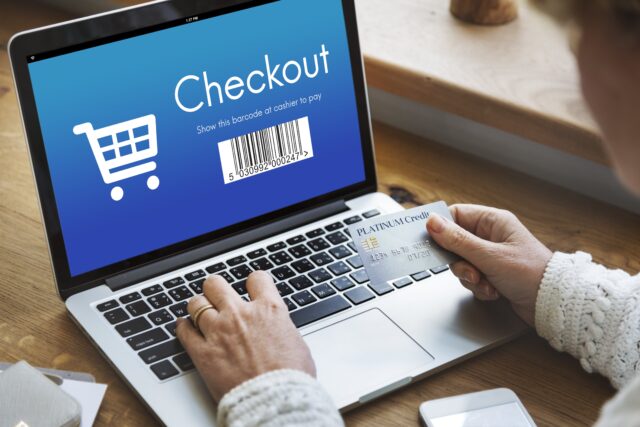In the digital age, eCommerce has become a cornerstone of retail, offering convenience and accessibility to consumers worldwide. However, with this convenience comes the responsibility of safeguarding sensitive customer information during the checkout process. A secure checkout process is crucial for building trust with your customers and ensuring the success of your online business. In this blog post, we’ll explore best practices for creating a secure eCommerce checkout process.

Table of Contents
Toggle1. Utilize HTTPS Protocol
The first step in ensuring a secure checkout process is to use HTTPS (Hypertext Transfer Protocol Secure). HTTPS encrypts the data exchanged between the user’s browser and your website, making it difficult for third parties to intercept sensitive information. To implement HTTPS, obtain an SSL (Secure Socket Layer) certificate for your domain. This not only protects customer data but also improves your website’s SEO ranking and enhances customer trust.
2. Implement Strong Authentication Measures
Incorporating strong authentication measures during the checkout process is vital for protecting customer accounts. Use multi-factor authentication (MFA) to add an extra layer of security. MFA requires customers to verify their identity through multiple methods, such as a password and a one-time code sent to their mobile device. This significantly reduces the risk of unauthorized access and helps protect sensitive customer information.
3. Use a Secure Payment Gateway
Choosing a reputable and secure payment gateway is essential for processing transactions safely. Look for payment gateways that are PCI DSS (Payment Card Industry Data Security Standard) compliant. These gateways follow strict security protocols to protect cardholder data during transactions. Popular options include PayPal, Stripe, and Authorize.Net, which offer secure transaction processing and fraud detection features.
4. Limit Data Collection
While it’s essential to collect certain information during checkout, it’s equally important to limit data collection to what is necessary. Only ask for information that is essential for processing the order, such as the customer’s name, shipping address, and payment details. Reducing the amount of sensitive data collected minimizes the risk of exposure in case of a data breach.
5. Implement Secure Payment Options
Offer secure payment options that provide additional layers of protection for customers. Options like digital wallets (e.g., Apple Pay, Google Pay) and buy now, pay later services (e.g., Afterpay, Klarna) can enhance security by not requiring customers to enter their credit card information directly on your website. These methods often come with built-in fraud protection and can increase conversion rates by providing customers with more flexible payment choices.
6. Monitor and Mitigate Fraudulent Transactions
Regularly monitor transactions for any suspicious activity. Implement fraud detection tools that use machine learning algorithms to identify potentially fraudulent transactions based on user behavior and historical data. Set up alerts for unusual purchasing patterns, such as multiple purchases from the same IP address within a short time frame. Having a proactive approach to fraud mitigation can help protect your business and your customers.
7. Provide Clear Communication and Support
Transparency is key in building trust with your customers. Clearly communicate your security measures on the checkout page to reassure customers that their information is safe. Include security badges and certifications prominently displayed during the checkout process. Additionally, provide accessible customer support options in case customers have questions or concerns about their transactions. Offering live chat support or a customer service hotline can help alleviate anxiety during the checkout process.
8. Conduct Regular Security Audits and Testing
Regularly assess your website’s security by conducting security audits and penetration testing. This will help identify vulnerabilities in your system and ensure that your security measures are up to date. Stay informed about the latest security threats and updates, and implement necessary patches and upgrades to your software. Being proactive in addressing potential security issues can prevent data breaches and enhance overall security.
9. Educate Your Customers
Empower your customers with knowledge about online security practices. Provide them with information on how to recognize phishing attempts, use strong passwords, and protect their personal information. Consider creating a dedicated section on your website that offers tips on safe online shopping. Educated customers are less likely to fall victim to scams, enhancing their overall experience with your brand.
10. Create a User-Friendly Experience
While security is paramount, it should not come at the cost of a user-friendly checkout experience. Simplify the checkout process by minimizing the number of steps and ensuring the interface is intuitive. Provide progress indicators to let customers know where they are in the checkout process. A smooth, efficient checkout experience encourages customers to complete their purchases while still feeling secure.
Conclusion
Creating a secure eCommerce checkout process is essential for building trust with customers and protecting sensitive information. By implementing best practices such as using HTTPS, strong authentication, secure payment gateways, and clear communication, businesses can ensure a safe and efficient checkout experience. Regularly monitoring and updating security measures will help keep your eCommerce site safe from potential threats. In an era where online shopping continues to grow, prioritizing security not only protects your customers but also enhances your brand’s reputation and success in the competitive eCommerce landscape.


No responses yet